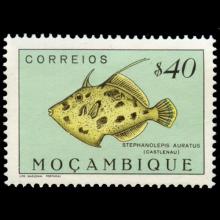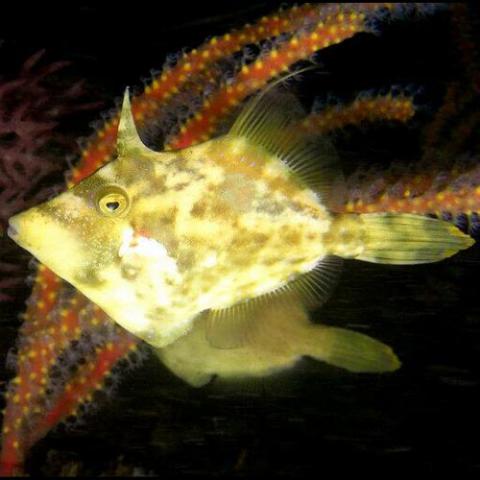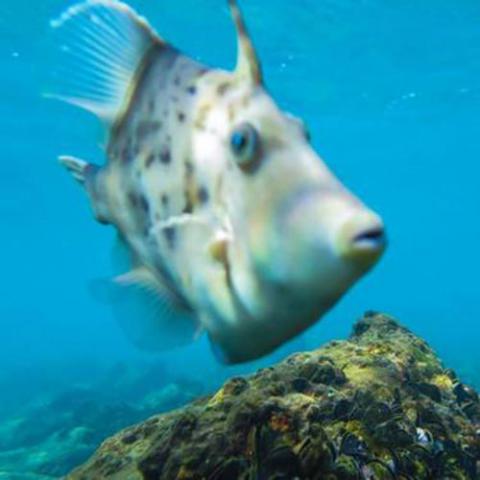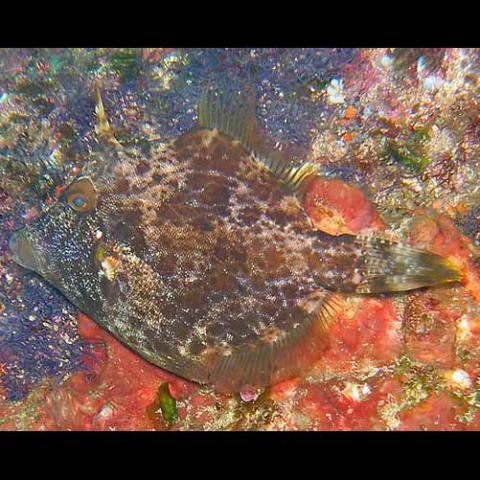NAMES
TAXONOMY
Mozambique
Issued:
Stamp:
Stephanolepis auratus
Mozambique
Issued:
Stamp:
Stephanolepis auratus
Mozambique
Issued:
Stamp:
Stephanolepis auratus
Genus species (Animalia): Stephanolepis auratus
Stephanolepis auratus (Porky) has dorsal spines (total): 2; Dorsal soft rays (total): 28-34; Anal spines: 0; Anal soft rays: 30 - 34. Greenish grey in color with scattered irregular blotches on side of body; soft dorsal, anal and pectoral fins pale; caudal fin with 2 dark curved cross bars.
Distribution
Western Indian Ocean: Zanzibar, Tanzania to Knysna, South Africa.
Genus: Stephanolepis
Stephanolepis is a genus of bony fish in the family Monacanthidae, the filefishes. Members of this genus are unusual-shaped fish and have a very rough skin which gives them their common name. They are laterally flattened and deep bodied with long dorsal and anal fins and a fan-shaped tail. They have a mouth at the tip of the projecting snout and a long spine on the top of the head.
Family: Monacanthidae
Appearing very much like their close relatives the triggerfish, filefish are rhomboid-shaped fish that have beautifully elaborate cryptic patterns. Deeply keeled bodies give a false impression of size when these fish are viewed facing the flanks. Filefish have soft, simple fins with comparatively small pectoral fins and truncated, fan-shaped tail fins; a slender, retractable spine crowns the head. Although there are usually two of these spines, the second spine is greatly reduced, being used only to lock the first spine in the erect position; this explains the family name Monacanthidae, from the Greek monos meaning "one" and akantha meaning "thorn". Some species also have recurved spines on the base of the tail (caudal peduncle).
The small terminal mouths of filefish have specialized incisor teeth on the upper and lower jaw; in the upper jaw there are four teeth in the inner series and six in the outer series; in the lower jaw, there are 4-6 in an outer series only. The snout is tapered and projecting; eyes are located high on the head. Filefish have rough non-overlapping scales with small spikes, which is why they are called filefish. Although scaled, some filefish have such small scales as to appear scaleless. Like the triggerfish, filefish have small gill openings and greatly elongated pelvic bones creating a "dewlap" of skin running between the bone's sharply keeled termination and the belly. The pelvis is articulated with other bones of the "pelvic girdle" and is capable of moving upwards and downwards in many species to form a large dewlap (this is used to make the fish appear much deeper in the body than is actually the case). Some filefish erect the dorsal spine and pelvis simultaneously to make it more difficult for a predator to remove the fish from a cave.
Reference: www.fishbase.se,wikipedia
Photo: Twitter,iNaturalist/brentch




